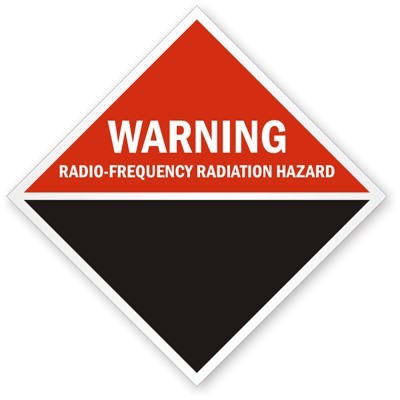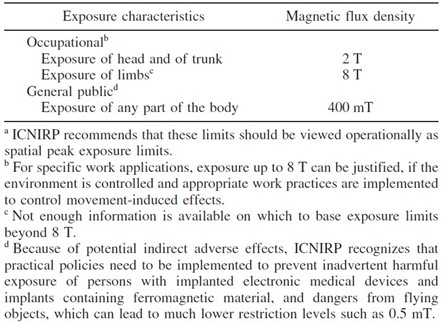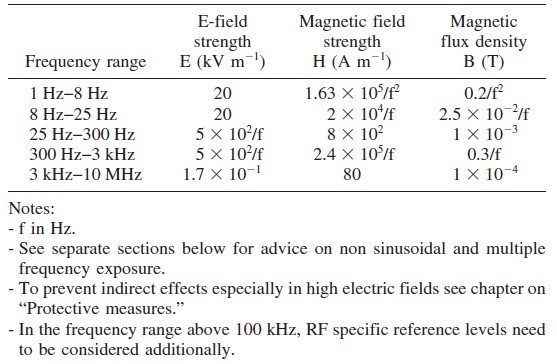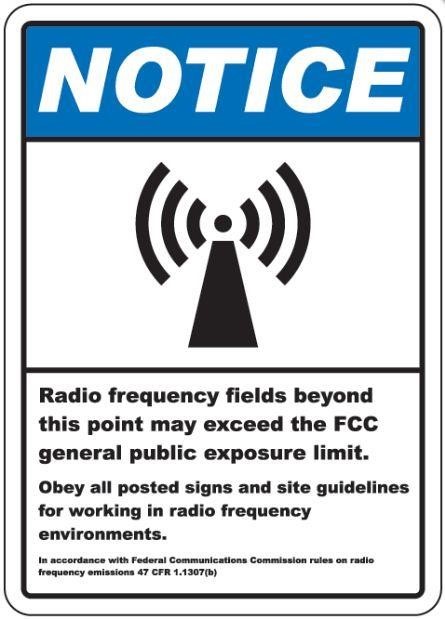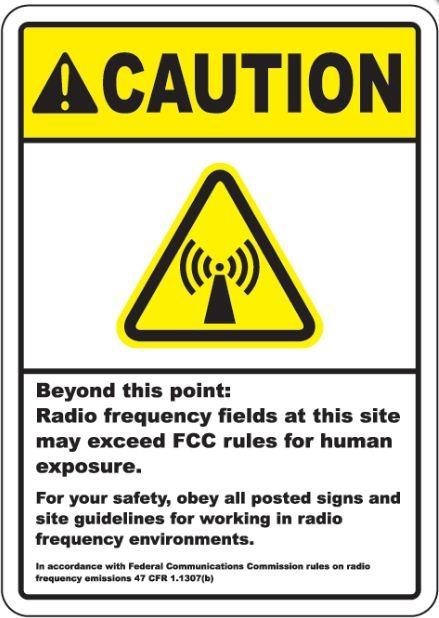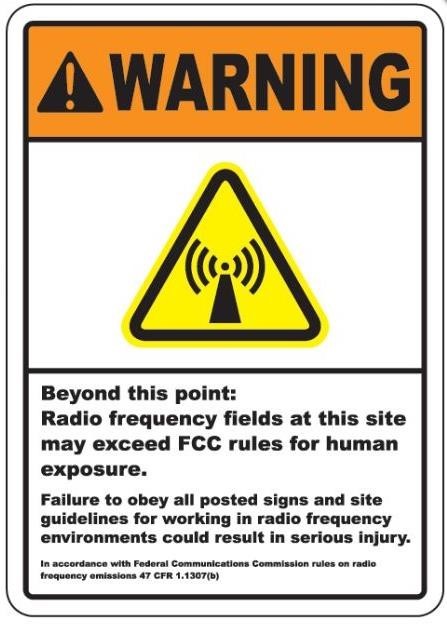The following terms are used in this document. The definitions below are used in the scope of this document, but local regulatory definitions supersede if there is a conflict.
Absorption: The attenuation of a radio wave due to dissipation of its energy, i.e., conversion of its energy into another form, such as heat.
American Conference of Governmental Industrial Hygienists (ACGIH): a member-based organization that advances occupational and environmental health.
American National Standards Institute (ANSI): An institute that oversees the creation, promulgation and use of thousands of guidelines and standards that directly impact businesses through quality and assessing conformance to standards.
As Low As Reasonably Achievable (ALARA): Making every reasonable effort to maintain exposures to radiation as far below the dose limits as practical, taking into account the state of technology, the economics of improvements in relation to benefits to health and safety, and other societal and socioeconomic considerations.
Basic Restrictions: Mandatory limitations on the quantities that closely match all known biophysical interaction mechanisms with tissue that may lead to adverse health effects.
Direct Current (DC): An electric current of constant direction, having a magnitude that does not vary or varies only slightly.
Dosimeter: A device used to measure an individual’s exposure to a hazard found in the environment.
Electric and Magnetic Field(s) (MF): Invisible lines of energy that surround any electrical device and are produced through the generation, transmission, and use of electric power. Voltage produces an electric field and current produces a MF.
Electronvolt (eV): The amount of energy gained by the charge of a single electron moved across an electric potential difference of one volt
Engineering Controls: The elimination or reduction of a hazard by means of engineered machinery or equipment. Examples include process change, isolation, ventilation, and source modification.
Extremely Low Frequency (ELF): frequency below 300 Hz. In the ELF range, electric and MF act independently, unlike electromagnetic fields of higher frequencies. These types of fields can be generated naturally and by artificial sources like electrical transmission lines.
Federal Communications Commission (FCC): Regulates interstate and international communications by radio, television, wire, satellite, and cable in the United States, including the District of Columbia and U.S. territories. It was established by the Communications Act of 1934 and operates as an independent U.S. government agency overseen by Congress.
Frequency: The number of cycles completed by an electromagnetic wave in 1 second; usually expressed in hertz (Hz). Electricity in North America alternates through 60 cycles per second, or 60 Hz. In many other parts of the world, the frequency of electric power is 50 Hz.
Gauss (G): unit of magnetic induction in the centimeter-gram-second system of physical units.
One gauss corresponds to 10-4 tesla (T), the International System Unit.
Hertz (Hz): The unit for expressing frequency, (f). One hertz equals one cycle per second. 1 kilohertz (kHz) = 1,000 Hz, 1 megahertz (MHz) = 1,000 kHz, 1 gigahertz (GHz) = 1,000 MHz.
Institute of Electrical and Electronics Engineers (IEEE): The world’s largest professional association dedicated to advancing technological innovation and excellence for the benefit of humanity.
International Agency for Research on Cancer (IARC): An intergovernmental agency of the United Nations whose role it is to conduct and coordinate research into the causes of cancer.
International Commission on Non-Ionizing Radiation Protection (ICNIRP): A body of independent scientific experts consisting of a main Commission of 14 members, 4 Scientific Standing Committees covering Epidemiology, Biology, Dosimetry and Optical Radiation and a number of consulting experts. This expertise is brought to bear on addressing the important issues of possible adverse effects on human health of exposure to non-ionizing radiation.
International Radiation Protection Association (IRPA): An international professional association for radiation protection. It promotes excellence in the practice of radiation protection through national and regional Associate Societies and radiation protection professionals by providing benchmarks of good practice and enhancing professional competence and networking.
Kilovolts (KV): A unit of electromotive force equal to 1,000 volts.
Magnetic Field Strength: An axial vector quantity, H, which, together with magnetic flux density, specifies a MF at any point in space, and is expressed in ampere per meter (A m-1).
Magnetic Flux Density: A vector field quantity, B, which results in a force which acts on a moving charge or charges and is expressed in tesla (T).
Microwaves: Electromagnetic radiation of sufficiently short wavelength for which practical use can be made of waveguide and associated cavity techniques in its transmission and reception. The term is taken to signify radiations or fields having a frequency range of 300 MHz to 300 GHz.
MilliGauss (mG): A unit of magnetic induction equal to 1/1,000 G.
Non-ionizing Radiation (NIR): Includes all radiations and fields of the electromagnetic spectrum that do not normally have sufficient energy to produce ionization in matter; characterized by energy per photon less than about 12 eV, wavelengths greater than 100 nanometers (nm), and frequencies lower than 3 x 1015 Hz.
Occupational Exposure Limit (OEL): A health-based workplace standard to protect workers from adverse exposure.
Radiofrequency (RF) Energy: Any frequency at which electromagnetic radiation is useful for telecommunication. RF refers to the frequency range 300 Hz to 300 GHz.
Reference Levels: The root mean square, peak electric and MF, and contact currents to which a person may be exposed without adverse effects and with acceptable safety factors. The reference levels for electric and MF exposure in the ICNIRP guidance may be exceeded if it can be demonstrated that the basic restrictions are not exceeded. Thus, it is practical or “surrogate” parameters that may be used for determining compliance with the Basic Restrictions.
Restricted Area: Any area access which is controlled by the employer to protect individuals from exposure to a hazard.
Static Magnetic Field: A field that does not vary with time. This type of magnetic field is generated by a magnet or by the flow of direct current (DC).
Tesla (T): The International System Unit of magnetic flux density. 1 tesla = 10,000 gauss.
Threshold Limit Value (TLV): Occupational exposure levels established by the ACGIH. The value is established at an exposure level where nearly all workers may be exposed without adverse health effects.
Unrestricted Area: Any area access which is not controlled by the employer to protect individuals from exposure to radiation or radioactive materials.
Volt (V): The International System Unit derived unit for electric potential, electric potential difference, and electromotive force. 1 kilovolt (kV) = 1,000 V
World Health Organization (WHO): The directing and coordinating authority for health within the United Nations system. It is responsible for providing leadership on global health matters, shaping the health research agenda, setting norms and standards, articulating evidence-based policy options, providing technical support to countries and monitoring and assessing health trends.
